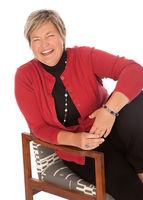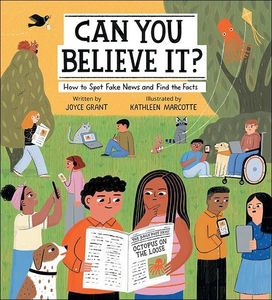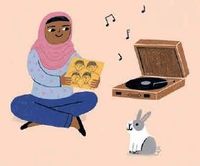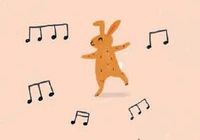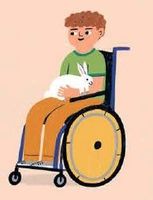Joyce Grant on Helping Young People Spot Fake News & Dubious Claims in an Ever-Changing Online Landscape
There are plenty of things that never change when it comes to being a parent. Parents throughout history have probably been charmed by a baby giggle, excited to see their kids master skills, and worried about their kids' health and safety. But some things do change – and change at such a rate that parents sometime end up with no clear blueprint. One of the biggest unmapped terrains for contemporary parents is the deluge of information available to kids online, and its often questionable quality. In the era of "fake news" and influencers paid to hawk sometimes dubious products, how do you not only protect kids from misinformation but equip them to be able to protect themselves?
Enter Joyce Grant, a writer, journalist, and the creator of one of Canada's first news websites specifically geared to kids. Her new book Can You Believe It? How to Spot Fake News and Find the Facts (Kids Can Press, illustrated by Kathleen Marcotte) steps into that unprecedented void, to help parents raise tech-savvy, media-savvy kids who can tell the difference between well-researched, creditable reportage and subjective media or even propaganda.
Examining how real, impartial journalism works and the tell-tale signs of manipulative media, the book is practical, smart, and often funny, packed with clear examples. Delving into fake news, influencers and celebrities, clickbait, and even unconscious and hidden biases in traditional reportage, the book meets young readers where they are and introduces a healthy skepticism and critical thinking that empowers rather than discouraging.
Given the book's vital subject matter, we're excited to welcome Joyce to Open Book today to discuss it. She tells us about why, despite the challenges inherent to the internet, she still thinks it's "awesome" and why she has "tremendous hope" for how kids will positively influence the online landscape, why bunnies became unexpectedly central to the book and her writing process, and why she is deeply grateful for her kid lit writing community, both online and off.
Open Book:
Tell us about your new book and how it came to be.
Joyce Grant:
Can You Believe It?: How to Spot Fake News and Find the Facts is my sixth book (and illustrator Kathleen Marcotte’s debut children’s book!). It’s published by Kids Can Press and helps kids know, in a fun way, how to tell if what they’re reading online is real or not.
About 12 years ago, I became worried that kids didn’t have the same access to the news as adults. So I started one of Canada’s first-ever kids’ news sites, TeachingKidsNews.com (TKN), with amazing educator Jon Tilly.
I also went into classrooms and talked to kids about the news. They started asking me about “fake news.” How could they tell the real from the fake? And then teachers and parents started asking.
I realized kids needed a guide—one that was fun and easy to understand. My then-agent Jennifer Laughran connected me with Kids Can Press and they loved the idea.
I’ve been blown away with how people have embraced this book. Teachers and parents can take it in many directions with their classes. Depending on how they’re teaching media literacy and what their students are working on, it can be used in lots of different ways. And kids like the bite-sized text blocks and hilarious illustrations.
Your CanLit News
Subscribe to Open Book’s newsletter to get local book events, literary content, writing tips, and more in your inbox
OB:
Is there a message you hope kids might take away from reading your book?
JG:
First, to not be scared of the internet. Let’s not pretend that it’s going anywhere, or that it’s not awesome. Because it is! But kids do need to learn how to navigate it safely, and learn why you shouldn’t share something that’s fake or exaggerated.
Second, to be a bit skeptical. The research shows that adults tend to question some things right away: “Oh, that’s not real!” Almost too much. Kids have the opposite tendency. They question things, but they don’t question whether they’re real or not. So for kids to have a bit of “wait, this just doesn’t sound right” approach to videos and social media.
Third, I think that kids are going to clean things up online, at least to a certain extent. I really do. When I see them using TikTok to question things or to challenge adult assumptions—that gives me tremendous hope. And if you’re an adult who knows a kid, ask them about fake videos and posts. Chances are, they’ll give you some good ideas about how to spot them—and you can do the same for them. It’s always evolving and no one knows it all. So let’s share what we know and help each other avoid misinformation.
OB:
Did the book look the same in the end as your originally envisioned it when you started working, or did it change through the writing process?
JG:
The book looks better than I could ever have imagined. (And I was imagining something pretty great!)
I had about six years’ worth of research—studies, white papers, articles, interviews—but I wasn’t sure how to structure it to keep it fun and intriguing and not like “work.”
Enter the incredible Kathleen Keenan from Kids Can Press—I have dubbed her the “Structure Queen.” She had great suggestions to improve the flow and structure. She helped me to elevate the book, while maintaining my vision for it.
I can’t say enough about the Kids Can team—including designer Andrew Dupuis, who knew exactly how to put everything on the page to make it fun and easy to follow.
And of course, Kathleen Marcotte’s wonderful, quirky drawings still make me laugh out loud! Literally. There’s one where we talk about how newsrooms used to be full of mostly white male reporters. She drew this hilarious spread in which everyone in the newsroom looks exactly the same. It gets the point across so well, and I hope the reader gets a chuckle out of it—and at the same time understands the issue.
The same for the spread about influencers. There’s this influencer who’s hawking a blender—and then in the next illustration you see the kid who’s bought this terrible blender, and there’s batter all over the kitchen and all over the cat. It’s funny!
OB:
What was the strangest or most memorable moment or experience during the writing process for you?
JG:
Bunnies! Throughout the book there are these bunnies—illustrations of bunnies. And then all of a sudden, whenever I was working on the book I’d see a bunny. I live in Hamilton, Ontario and there happen to be lots of them here. But even when I was vacationing in a different province and I phoned my editor, Kathleen Keenan (we were on deadline). I was in the middle of nowhere—I’d just finished hiking. And as I’m talking to Kathleen a bunny runs out into the clearing where I’m standing and right past me! I couldn’t believe it. It was so coincidental. So I asked Kathleen if we could put even more bunnies throughout the book, and she did.
Well, the bunnies must have liked that because they started showing up whenever there was a book-related event. The night before my book launch, guess what I saw on the paved street around 10 p.m.? Right, a bunny. It was wishing me luck for the launch, I guess.
And then as my friends were leaving after the launch one of them pointed and said, “Oh, look! A bunny!” I just rolled my eyes at that point because—yeah. Bunnies!
OB:
Do you feel like there are any misconceptions about writing for young people? What do you wish people knew about what you do?
JG:
It’s about my kids’ news website. I wish people knew that it’s actually harder to write news for kids than it is to write it for adults. With adults, you can use words like “embargo” or “run on the banks” or “right-wing and left-wing.” With young readers, you need to explain every term and every acronym, unpack them. Which means that you, as the writer, have to understand them all very thoroughly—and really know the facts you’re writing about so you can simplify them. It’s really challenging. But I love doing it, because it means that when there’s an important story, kids can go on TeachingKidsNews.com to get a version of it that’s been written with them in mind.
OB:
How would you describe the writing community in Canada in terms of authors writing for young people? What strengths and weaknesses do you observe within the community?
JG:
I’m so grateful to the authors and illustrators—as well as the editors and the publishers—I’ve gotten to know. In kidlit, the community comes together to support each other. We boost each other’s social media and books and work. We give each other leads and ideas and suggestions. We remind each other of grant deadlines and tip one another off to opportunities. I wouldn’t be anywhere without my amazing writers’ group, my CANSCAIP friends, I Read Canadian, Authors Booking Service, and my writing partners.
They were with me when I wrote “The End” on my first novel—and promptly burst into tears (in a Starbucks!). And just the other day, when I hit “Send” on a big pitch to an editor. We were in a virtual writing gathering online, and they stopped and celebrated with me. So, so amazing. Because writing can be a lonely business sometimes. I need those people and I appreciate them so much. Many of them came to my launch to buy my book and celebrate with me. How great is that?
OB:
What are you working on now?
JG:
I’m working on a book along the lines of Can You Believe It? It’s about how we’re all in separate “information bubbles.” How algorithms keep us insulated from finding out about other points of view. I’ve been doing a lot of research about it and it’s pretty fascinating just how ensconced we are in our own world view—and how that’s often done deliberately by the social media we use. It’s so important to break out of those information bubbles and try to see other people’s viewpoints on things. So important, but so difficult. I want to help kids figure out how to do that, in the hopes that one day the world may not be so polarized. I know that will happen. It has to. And maybe with a book like mine and the ones so many other people are writing, about being open to different points of view, we children’s authors can help make that happen.
______________________________________________________
Joyce Grant is a freelance journalist and children’s author. She created the popular website Teaching Kids News and has given hundreds of presentations at schools and libraries. She is also the author of the Gabby picture book series and two middle-grade novels. Joyce lives with her family in Hamilton, Ontario.
